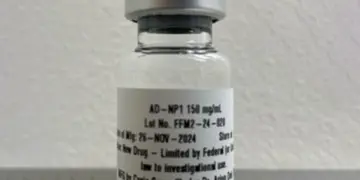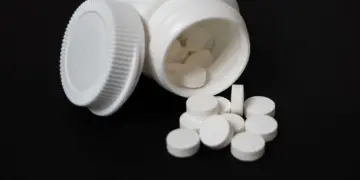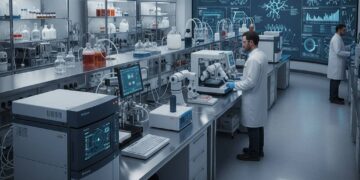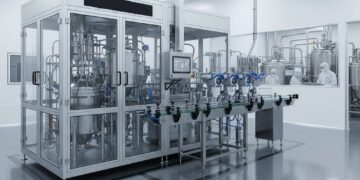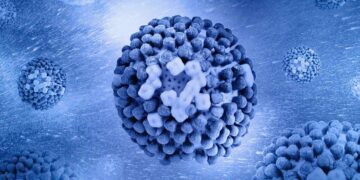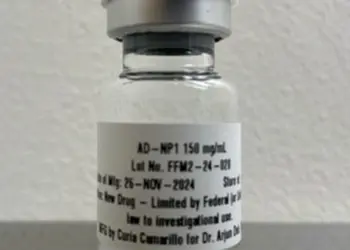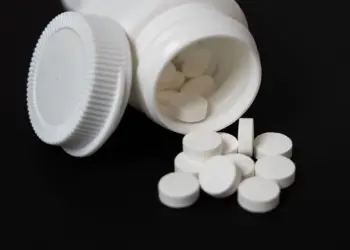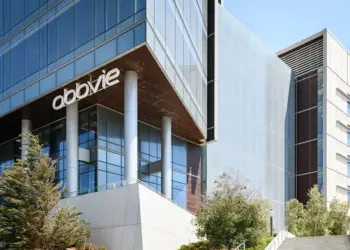As concerns about bacterial resistance to antibiotics grow, researchers are racing to find new kinds of drugs to replace ones that are no longer effective. One promising new class of molecules called acyldepsipeptides – ADEPs – kills bacteria in a way that no marketed antibacterial drug does – by altering the pathway through which cells rid themselves of harmful proteins.
Now, researchers from Brown University and the Massachusetts Institute of Technology have shown that giving the ADEPs more backbone can dramatically increase their biological potency. By modifying the structure of the ADEPs in ways that make them more rigid, the team prepared new ADEP analogs that are up to 1,200 times more potent than the naturally occurring molecule.
A paper describing the research was released on-line by the Journal of the American Chemical Society.
“The work is significant because we have outlined and validated a strategy for the enhancing the potency of this promising class of antibacterial drug leads,” said Jason Sello, professor of chemistry at Brown and the paper’s senior author. “The molecules that we have synthesized are among the most potent antibacterial agents ever reported in the literature.”
ADEPs kill bacteria by a mechanism by that is distinct from all clinically available anti-bacterial drugs. They work by binding to a protein in bacterial cells that acts as a “cellular garbage disposal,” as Sello describes it. This barrel-shaped protein, called ClpP, breaks down proteins that are misfolded or damaged and could be harmful to the cell. However, when ClpP is bound by an ADEP, it’s no longer so selective about the proteins it degrades In essence, the binding by ADEP causes the garbage disposal to run amok and devour healthy proteins throughout the cell. For bacteria, a runaway ClpP is deadly.
ADEPs have been shown to kill bacteria that cause staph infections, some kinds of pneumonia, tuberculosis, and other types of infection in the lab. The molecules have also been reported to cure bacterial infections in mice and rats.
ADEPs were first discovered as naturally occurring compounds. Certain bacteria produce them for chemical defense. But for the last few years, scientists including Sello’s group have been making synthetic ADEP analogs, in the hope of identifying compounds with potential as new drugs.
One approach the researchers thought might work involves making the ADEP molecule more rigid. Compared to the ClpP molecule to which it binds, the ADEP molecule is a bit “floppy,” Sello said. “We often use the expression ‘lock and key’ to describe how a small molecule binds to a protein. One can imagine that it is easier to fit a rigid key into a lock rather than a floppy key. In the same sense, rigid molecules often bind to their protein targets more tightly.”
Sello and his team synthesized several new ADEP molecules. They swapped out certain amino acids in the naturally occurring molecule with ones they thought might increase the molecule’s rigidity. To find out if the new molecules were indeed more rigid, the team performed experiments that tested the strength of hydrogen bonds within the molecule. Stronger hydrogen bonds would indicate a more rigid molecule.
The researchers placed ADEP molecules in a solution rich in deuterium, a hydrogen atom that has an extra neutron. Over time, the deuterium atoms in the solution will swap places with the hydrogen atoms in the ADEP molecules. The deuterium swap happens more slowly, however, when hydrogen atoms are involved with strong bonds. So if the modified ADEPs exchanged deuterium more slowly, it would be an indication of strong bonds and a more rigid molecule.
The experiments showed that the modified ADEPs exchanged deuterium as much as 380 times more slowly than the natural molecule, a clear indication that the molecules were more rigid.
“It was exciting to see how rather simple modifications to the ADEP structure could affect their rigidity in such a profound manner,” said Daniel Carney, a graduate student in Sello’s group. “More importantly, the results were in line with our ADEP design principle. It is always rewarding when a sophisticated chemical theory can be applied and validated by laboratory experiments.”
To follow up on the prediction that the rigid ADEPs would bind ClpP more tightly, Robert Sauer and Karl Schmitz at MIT measured the capacity of the ADEP analogs and the parent compound to produce the “runaway garbage disposal” phenomenon in solutions containing the ClpP protein. The experiments showed that the modified ADEPs produced the effect at much lower concentrations, indicating a higher binding efficiency. The results implied that the modified molecules were about seven times better than the standard ones at binding to ClpP.
The final step was testing whether the rigid ADEPs were better at killing bacteria in a test tube. Those tests showed that, compared to published reports for standard ADEPs, the modified compounds were much more potent against three different dangerous bacteria – 32 times more potent against S. aureus, 600 times more potent against E. faecalis, and 1,200 times more potent against S. pneumoniae.
Sello was a bit surprised by the dramatic increase in ADEP potency compared to the much more modest improvement in ClpP binding.
“We found that the most potent ADEP analog binds ClpP seven-fold better than the parent compound, yet it has 1,200-fold better antibacterial activity,” Sello said. “We believe that some of the increase in potency may stem from the fact that the rigidified ADEPs bind ClpP more tightly and have an enhanced capacity to cross the cell membrane. The improved cell permeability of the ADEP analogs is consistent with reports in the literature that molecules with strong intramolecular hydrogen bonds are particularly good at penetrating cells.”
Sello and his team are encouraged by their results and are working to develop the ADEPs into next-generation antibacterial drugs. The next step – a study to test how well the compounds work in mice – is already underway.




